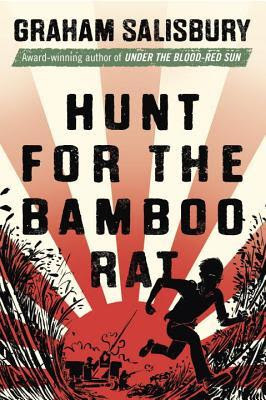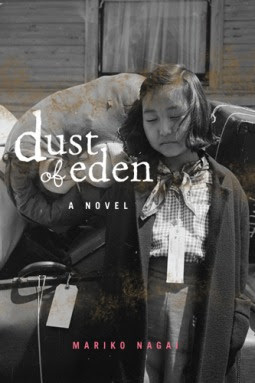Reading the Pacific War in 5 Formats
Reading the Pacific War--In Five Formats
A combo #Japan and #PoetryFriday and #VerseNovels #CrossingBorders Post
Manga
On November 30, 2015, the world lost one of the most beloved and talented manga artists and one of the most valued chroniclers of the Pacific War--Japanese manga-ka Shigeru Mizuki died at the age of 93. Here is one obituary by Matt Alt in The New Yorker, and here is a poignant tribute, Otsukare, Sensei, by Shigeru Mizuki's English-language translator Zack Davisson.
I have recently been completely immersed in Shigeru Mizuki's translated manga works: Onward Towards our Noble Deaths; the multi-tomed series Showa: A History of Japan including Showa 1926-1939, Showa 1939-1944, Showa 1944-1953, and Showa 1953-1989; the supernatural yokai stories of Kitaro; and NonNonBa. His works are gradually becoming available in English translation, thanks to publisher Drawn & Quarterly.


I know I will be reading Mizuki's Showa series again and again, for their artistry, for their brilliance, and for their powerful anti-war stance.
YA Fiction
December 7 marked the anniversary of the 1941 bombing of Pearl Harbor by the Imperial Japanese Navy, which led to the entrance of the U.S. into WWII. In addition to Mizuki's tomes, I have also been reading Graham Salisbury. I just finished Hunt for the Bamboo Rat, based on a true story of a Japanese-American sent to the Philippines to work as a translator and spy for the U.S. Army. Hunt for the Bamboo Rat is the fourth book in Salisbury's Prisoners of the Empire series.

Photography
Pearl Harbor was followed by the relocation and imprisonment of some 120,000 Japanese-Americans from the West Coast. Visit this gallery in the International New York Times of photos in the traveling exhibit of the project Gambatte! Legacy of an Enduring Spirit by photojournalist Paul Kitagaki, Jr., whose parents were interned.
 via International New York Times LensMG/YA Verse Novel
via International New York Times LensMG/YA Verse Novel
Mariko Nagai's verse novel Dust of Eden beautifully captures the pain, loss and sense of betrayal of a young Japanese-American girl sent with her family from California to the Minidoka Relocation Camp in Idaho.

Poetry
For poems by poets from various sides and vantage points of the wars of WW2, see The Poets of WWII, on the Compassion Education site. I'll end this post with works by two Japanese poets.
First I send you to a poem by Rin Ishigaki, "In the Stomachs of One Hundred People"--a poem for readers to ponder.

All of these writers and artists remind us that we must not forget. Manga, fiction, photography, verse novels and poetry can disturb our universe and act as a reminder for us all to strive for peace--here, on this fragile earth.
A combo #Japan and #PoetryFriday and #VerseNovels #CrossingBorders Post
Manga
On November 30, 2015, the world lost one of the most beloved and talented manga artists and one of the most valued chroniclers of the Pacific War--Japanese manga-ka Shigeru Mizuki died at the age of 93. Here is one obituary by Matt Alt in The New Yorker, and here is a poignant tribute, Otsukare, Sensei, by Shigeru Mizuki's English-language translator Zack Davisson.
I have recently been completely immersed in Shigeru Mizuki's translated manga works: Onward Towards our Noble Deaths; the multi-tomed series Showa: A History of Japan including Showa 1926-1939, Showa 1939-1944, Showa 1944-1953, and Showa 1953-1989; the supernatural yokai stories of Kitaro; and NonNonBa. His works are gradually becoming available in English translation, thanks to publisher Drawn & Quarterly.


I know I will be reading Mizuki's Showa series again and again, for their artistry, for their brilliance, and for their powerful anti-war stance.
YA Fiction
December 7 marked the anniversary of the 1941 bombing of Pearl Harbor by the Imperial Japanese Navy, which led to the entrance of the U.S. into WWII. In addition to Mizuki's tomes, I have also been reading Graham Salisbury. I just finished Hunt for the Bamboo Rat, based on a true story of a Japanese-American sent to the Philippines to work as a translator and spy for the U.S. Army. Hunt for the Bamboo Rat is the fourth book in Salisbury's Prisoners of the Empire series.

Photography
Pearl Harbor was followed by the relocation and imprisonment of some 120,000 Japanese-Americans from the West Coast. Visit this gallery in the International New York Times of photos in the traveling exhibit of the project Gambatte! Legacy of an Enduring Spirit by photojournalist Paul Kitagaki, Jr., whose parents were interned.
 via International New York Times LensMG/YA Verse Novel
via International New York Times LensMG/YA Verse NovelMariko Nagai's verse novel Dust of Eden beautifully captures the pain, loss and sense of betrayal of a young Japanese-American girl sent with her family from California to the Minidoka Relocation Camp in Idaho.

Poetry
For poems by poets from various sides and vantage points of the wars of WW2, see The Poets of WWII, on the Compassion Education site. I'll end this post with works by two Japanese poets.
First I send you to a poem by Rin Ishigaki, "In the Stomachs of One Hundred People"--a poem for readers to ponder.
In the Stomachs of One Hundred PeopleAnd last, I send you to the profoundly moving and disturbing poems of atomic bomb survivor and anti-nuclear weapons activist Sadako Kurihara--here are five poems: "We Shall Bring Forth New Life," "The Day of the Atom Bomb," "When We Say, 'Hiroshima,'" "Hiroshima, Auschwitz: We Must Not Forget," and "City Ravaged by Flames."
On the tables, one hundred plates,before them, one hundred people,on the plates, one hundred flounders; (read the full poem here)

All of these writers and artists remind us that we must not forget. Manga, fiction, photography, verse novels and poetry can disturb our universe and act as a reminder for us all to strive for peace--here, on this fragile earth.
Published on December 10, 2015 21:07
No comments have been added yet.



